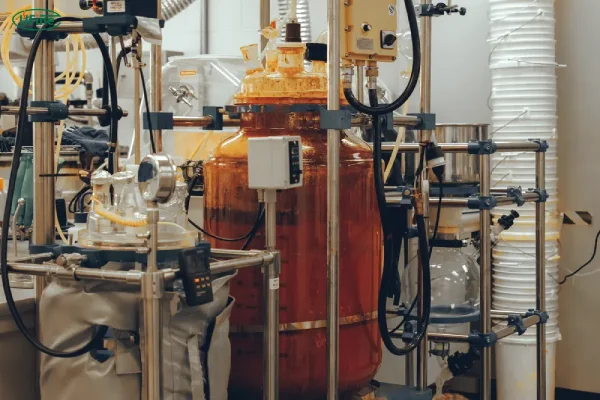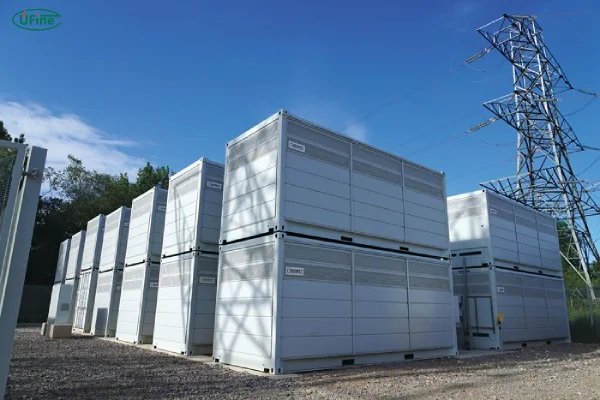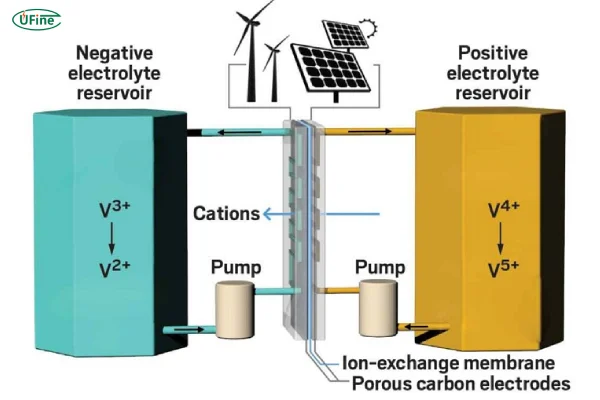Part 1. What is the flow battery?
A flow battery is a type of rechargeable battery that stores energy in liquid electrolytes, distinguishing itself from conventional batteries, which store energy in solid materials. The primary innovation in flow batteries is their ability to store large amounts of energy for long periods, making them an ideal candidate for large-scale energy storage applications, especially in the context of renewable energy.
Flow batteries have a storied history that dates back to the 1970s when researchers began experimenting with liquid-based energy storage solutions. The development of the Vanadium Redox Flow Battery (VRFB) by Australian scientists marked a significant milestone, laying the foundation for much of the current technology in use today. Since then, flow batteries have evolved significantly, and ongoing research promises to address many of the challenges they face, making them an increasingly viable solution for grid energy storage.
One of the most exciting aspects of flow batteries is their potential to revolutionize the energy storage sector. With increasing global interest in renewable energy sources like wind and solar, the need for efficient, long-duration storage technologies has never been more urgent. Flow batteries, with their scalability and long lifespan, are well-positioned to fill this gap.
Part 2. Basic components and working principles
Understanding the key components of flow batteries is crucial to appreciating their advantages and challenges. Flow batteries consist of several critical parts, each contributing to their overall performance:
-
Electrolytes: The two most important elements of a flow battery are the positive and negative electrolytes, typically stored in separate external tanks. These electrolytes are usually in liquid form and contain ions that facilitate the battery’s energy conversion process.
-
Electrodes: The electrodes, which are typically made of carbon-based materials, serve as the sites where the electrochemical reactions occur. These electrodes facilitate the movement of electrons between the electrolytes, creating the electrical current that powers devices or feeds into the grid.
-
Membrane: The membrane separates the two electrolytes and allows ions to pass from one side to the other, but it prevents the mixing of the positive and negative solutions. The efficiency of this membrane plays a crucial role in the overall performance and stability of the flow battery.
-
Pumps and Flow System: The liquid electrolytes are pumped through the system to maintain the necessary flow rate and ensure that the reactions continue smoothly. The flow rate of the electrolyte affects both the power output and the energy efficiency of the system.
The working principle of a flow battery is based on electrochemical reactions. When the battery discharges, the positive electrolyte flows past the anode, where oxidation occurs, releasing electrons. These electrons travel through an external circuit, powering devices, before they return to the battery and combine with ions from the negative electrolyte. During charging, the reaction is reversed, and energy is stored in the electrolytes for later use.
Part 3. Advantages
-
Scalability: One of the standout features of flow batteries is their inherent scalability. The energy storage capacity of a flow battery can be easily increased by adding larger tanks to store more electrolyte. This is a key advantage over solid-state batteries, like lithium-ion, where scaling up often requires more complex and expensive modifications.
-
Long Lifespan: Flow batteries typically have a much longer lifespan than conventional lithium-ion batteries. While lithium-ion batteries experience a gradual loss of capacity due to chemical degradation, flow batteries are not as susceptible to these issues. The longevity of flow batteries makes them ideal for large-scale applications where long-term reliability is essential.
-
Safety: Flow batteries are non-flammable and much safer than lithium-ion batteries, which can catch fire under certain conditions, such as overcharging or physical damage. Since the electrolytes in flow batteries are aqueous solutions, they do not pose the same risk of thermal runaway or explosion.
-
Flexible Discharge Time: Flow batteries can provide energy over longer durations, making them particularly suitable for applications like grid stabilization and off-grid energy systems. This is in contrast to lithium-ion batteries, which generally have shorter discharge times.
-
Environmentally Friendly: Many flow battery technologies use environmentally benign materials like vanadium, iron, or zinc, which are more abundant and less harmful to the environment than the rare metals used in lithium-ion batteries, such as cobalt and nickel.
Part 4. Disadvantages
-
Lower Energy Density: Flow batteries generally have a lower energy density than lithium-ion batteries, meaning they require more space to store the same amount of energy. This makes them less suitable for portable applications like electric vehicles or smartphones.
-
High Initial Costs: The initial cost of setting up a flow battery system is relatively high. This is due to the need for large tanks, pumps, and other infrastructure. However, operational costs tend to be lower over time because flow batteries can last longer and require less frequent replacement.
-
Complex Design: The design of flow batteries is more complex than solid-state batteries. The system requires pumps, tanks, and other moving parts that can introduce mechanical failure or inefficiencies. Additionally, maintaining the system requires specialized knowledge, which can increase operating costs.
Part 5. Innovations in flow battery technology

Recent innovations have significantly advanced the capabilities of flow batteries, making them a more attractive option for energy storage. Some of the most promising innovations include:
-
New Electrolyte Materials: Traditionally, flow batteries used vanadium-based electrolytes, but recent research has focused on alternative materials, such as zinc, iron, and organic compounds. These materials are less expensive and more abundant, potentially reducing the cost of flow batteries and making them more commercially viable.
-
Improved Ion-Selective Membranes: Advances in membrane technology have helped to increase the efficiency and energy density of flow batteries. New membranes allow for better ion transfer between the electrolytes, improving the overall performance and reducing energy losses during both charging and discharging.
-
Hybrid Systems: Researchers are also exploring hybrid flow battery systems that combine the benefits of different technologies, such as lithium-ion and flow batteries. These hybrid systems can offer the high energy density of lithium-ion with the long-duration storage capabilities of flow batteries.
-
Automation and AI Integration: The integration of artificial intelligence (AI) and automation in managing the flow battery systems has enhanced their performance. AI algorithms can optimize the flow rates, charging cycles, and overall system efficiency, ensuring that the batteries are always operating at their peak potential.
Part 6. Applications
Flow batteries are increasingly being deployed in various sectors, with a particular emphasis on large-scale energy storage applications. Some key areas of application include:
-
Renewable Energy Storage: One of the most promising uses of flow batteries is in the storage of energy from renewable sources such as solar and wind. Since these energy sources are intermittent, flow batteries can store excess energy during times of peak generation and discharge it when demand is high, providing a stable energy supply.
-
Grid Stabilization: Flow batteries are well-suited for grid stabilization, as they can provide reliable, long-duration power during periods of high demand or in the event of a power outage. Their ability to discharge energy over extended periods makes them ideal for maintaining grid stability.
-
Off-Grid Energy Systems: In remote locations where access to a reliable power grid is limited, flow batteries offer a viable solution for storing energy generated from local renewable sources. Their long cycle life and large storage capacity make them particularly well-suited for off-grid applications.
-
Military and Emergency Power: Flow batteries are increasingly being considered for military and emergency backup power systems. Their ability to store energy for long periods and their safety features make them an attractive option for critical infrastructure.
As the global push toward renewable energy continues to grow, the demand for reliable, scalable, and long-duration energy storage systems like flow batteries is expected to increase significantly. The global adoption of flow batteries is already underway, with installations in countries such as the U.S., China, and Germany.
Part 7. Flow batteries vs. lithium batteries: a detailed comparison
When comparing flow batteries to lithium-ion batteries, several key differences become apparent:
-
Energy Density: Lithium-ion batteries have a higher energy density, meaning they can store more energy in a smaller space. However, this comes at the expense of longevity, as lithium-ion batteries tend to degrade over time.
-
Cycle Life: Flow batteries generally have a much longer cycle life than lithium-ion batteries. They can undergo thousands of charge-discharge cycles with little loss in capacity, while lithium-ion batteries typically begin to lose efficiency after a few hundred cycles.
-
Scalability: Flow batteries are more easily scalable than lithium-ion batteries. The energy storage capacity of a flow battery can be increased simply by adding larger tanks to store more electrolyte, while scaling lithium-ion batteries requires more complex and expensive infrastructure.
-
Cost: While flow batteries tend to have higher upfront costs due to their larger size and more complex components, their operational costs are lower over time due to their longer lifespan and lower maintenance requirements. Lithium-ion batteries, on the other hand, are less expensive initially but need to be replaced more frequently.
-
Safety: Flow batteries are inherently safer than lithium-ion batteries, as they are less prone to thermal runaway and fire hazards. The use of non-flammable liquid electrolytes greatly reduces the risk of dangerous incidents, which is particularly important in large-scale energy storage applications.
Part 8. Challenges facing flow batteries
While flow batteries offer many advantages, they still face several challenges that hinder their widespread adoption:
-
Initial Capital Costs: The high upfront cost of installing a flow battery system remains one of the biggest barriers to its adoption. The need for large tanks, pumps, and other components adds to the overall cost of the system.
-
Limited Commercial Availability: Despite significant advancements in technology, flow batteries are still not as commercially available as lithium-ion batteries. Most flow battery systems are still in the prototype or pilot stage, with limited large-scale deployments.
-
Technical Challenges: Maintaining the delicate balance between the two electrolytes and ensuring optimal flow rates can be difficult. The need for ongoing maintenance and specialized expertise also increases the operational costs of flow battery systems.
Part 9. Future trends
The future of flow batteries is bright, with several trends indicating that this technology could play a key role in the future of energy storage:
-
Cost Reductions: As research progresses and manufacturing processes improve, the cost of flow batteries is expected to decrease significantly. The development of cheaper, more abundant materials and improved manufacturing techniques will make flow batteries more competitive with lithium-ion batteries.
-
Integration with Renewable Energy: Flow batteries are poised to become a critical part of the renewable energy ecosystem, especially as countries strive to reduce their dependence on fossil fuels. The ability to store large amounts of energy for long periods is particularly useful for balancing the intermittent nature of solar and wind power.
-
Technological Advancements: Ongoing research into more efficient electrolytes, membranes, and hybrid systems will continue to improve the performance of flow batteries. These advancements will help to address the current limitations of energy density and system complexity, making flow batteries a more attractive option for large-scale energy storage.
In conclusion, flow batteries represent an exciting and innovative solution for large-scale energy storage, particularly in the context of renewable energy integration. While challenges remain, ongoing research and development promise to overcome these obstacles, positioning flow batteries as a key player in the future of energy storage.
Related Tags:
More Articles

How to Choose the Best Jigsaw Tool Battery for Long-Lasting Power
Discover the top jigsaw tool batteries for power & runtime. Compare Li-ion vs. NiCd, top brands, and tips to extend battery life. Read now
The Logistics of Bulk Battery Orders: Shipping, Storage, and Hazmat Compliance
Learn how to safely manage bulk battery orders with tips on shipping, storage, and hazmat compliance for smarter, safer logistics.
Microcurrent Facial Device Battery Guide & Tips
Learn all about microcurrent facial device batteries, from types to lifespan, and how to choose a reliable supplier for long-lasting, safe skincare performance.
Power Pack Battery vs. Power Bank: What’s the Difference?
Power pack vs power bank: Learn the key differences, pros, and best uses to choose the right portable power source for your lifestyle.
What Is a Power Pack Battery and How Does It Work?
A power pack battery stores energy for off-grid use, emergencies, or travel. Learn how it works and how to choose the right one for your needs.





